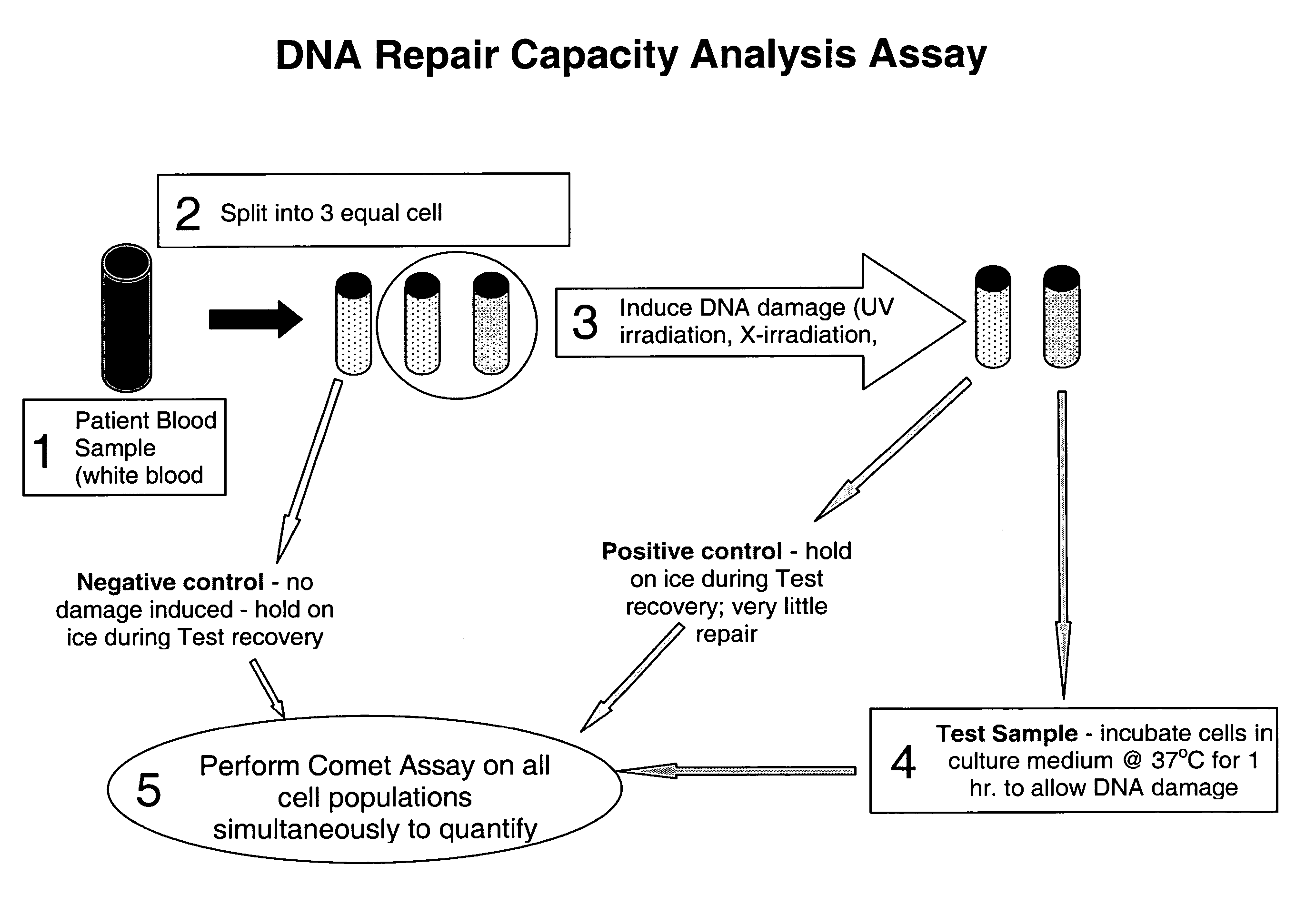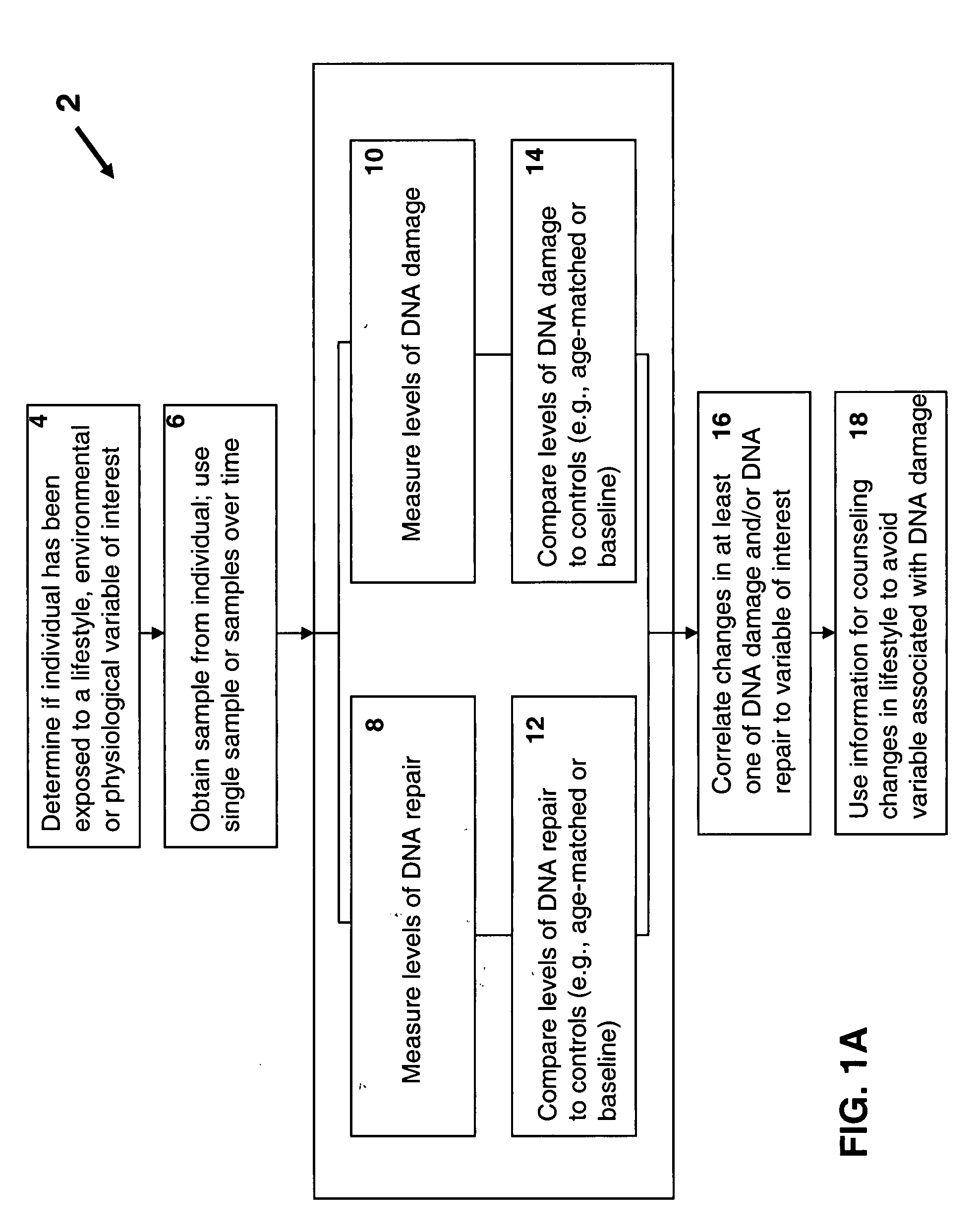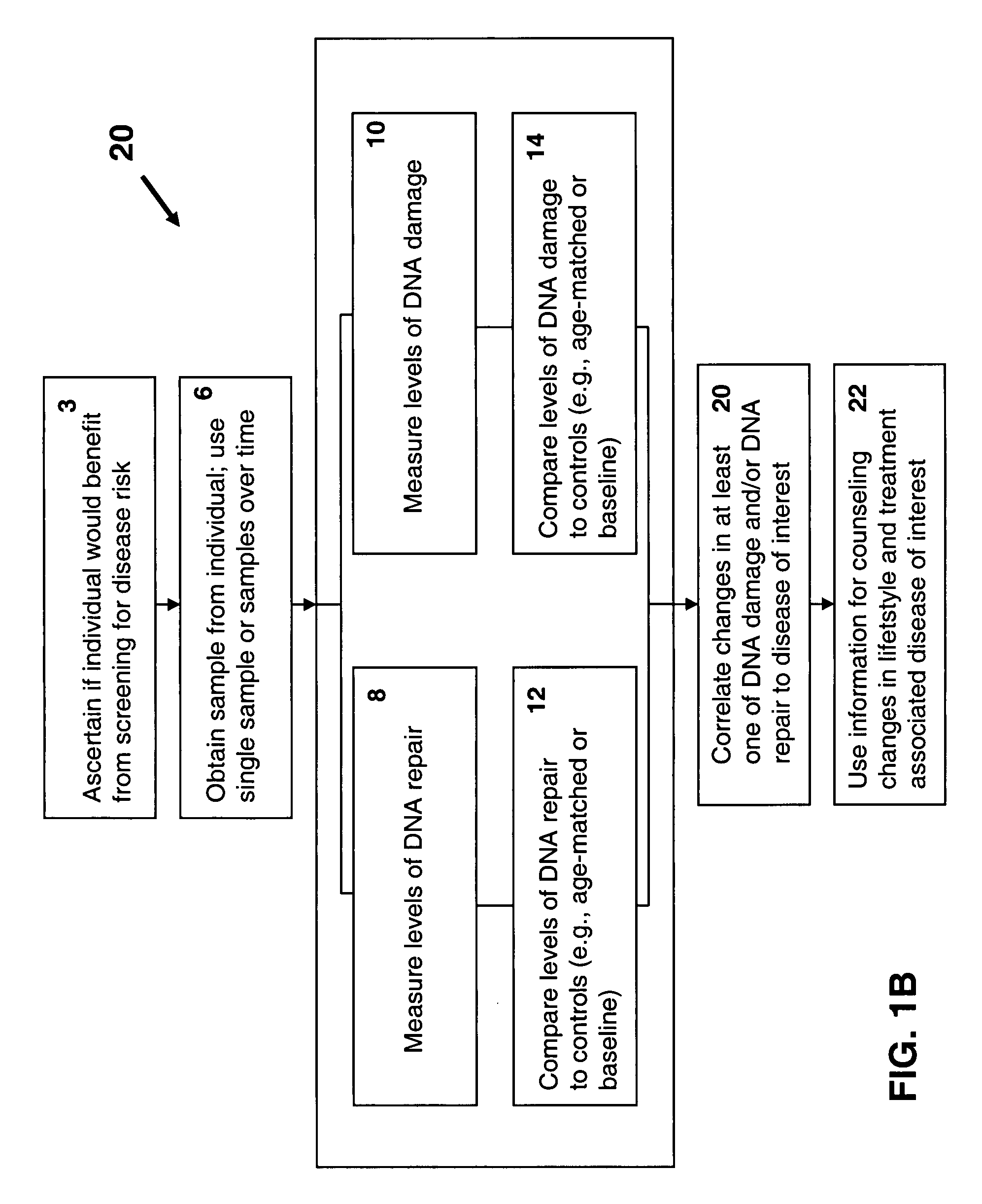Methods and systems for evaluating health risk factors by measurement of DNA damage and DNA repair
a technology of health risk factors and dna damage, applied in the field of evaluating health risk factors by dna damage and dna repair, can solve the problems of insufficient use of methods involving a more comprehensive battery of tests for measuring both dna damage induction and dna repair, and cell dna damage may be damaged,
- Summary
- Abstract
- Description
- Claims
- Application Information
AI Technical Summary
Benefits of technology
Problems solved by technology
Method used
Image
Examples
example 1
Quantitation of 8-Hydroxydeoxyguanosine in Urine
[0118] A quantitative, non-invasive measurement of 8-hydroxydeoxyguanosine (8-OH-dG) in urine can be used to monitor oxidative damage to DNA. Quantitative measurement of 8-OH-dG in urine (or other bodily samples) is performed by two-dimensional liquid chromatography with tandem mass spectrometry detection (2D-LC-MS / MS) after sample dilution. Alternatively, 8-OH-dG may be immunoprecipitated from samples of interest and the 8-OH-dG detected by HPLC using methods known in the art. For urine samples, 8-OH-dG concentration is reported as a fraction relative to creatinine level in the sample to normalize for urine concentration (i.e.—8-OH-dG in ng / mg creatinine). Urinary creatinine measurement is a standard and common clinical laboratory test.
[0119] For detection by 2D-LC-MS / MS, samples, standards and controls are diluted ten-fold with 1 ng / mL internal standard (stable, isotopically-labeled 15N5-8-oxo-2dG) solution in 2% aqueous formic aci...
example 2
DNA Ladder Assay
[0130] A PCR-based system is used to determine the relative frequency of damage / breaks in an individual's DNA. By performing short, e.g., ˜400 base pair (bp) to long, e.g., ˜18,000 bp PCR amplifications, the relative number of DNA breaks can be estimated. The procedure relies on the fact that DNA strands with breaks and certain kinds of damage inhibit the completion of a full-length template copy during PCR. Additionally, the longer an amplicon is, the more likely it is that damage will be encountered. Therefore, individuals with an increased amounts of damage will have a reduced amount of the longer expected amplicons produced.
[0131] DNA is isolated from cells using the Qiagen Blood & Cell Culture DNA Mini Kit, according to the manufacturer's instructions. DNA is resuspended in 200 μl TE buffer and the quality of the DNA is checked by running 5 μl on an 0.8% agarose gel with molecular weight markers. The concentration of DNA is then determined and approximately eq...
example 3
DNA Repair Enzyme Assays
[0134] Constitutively expressed DNA repair enzymes exist to quickly repair DNA lesions before they can cause permanent mutations. Decreased repair activity is therefore associated with adverse events such as disease development and accelerated aging. Measurement of gene expression levels by RT-PCR of a selected panel of DNA repair enzymes is performed as described below.
[0135] Two protocols are provided for extracting mRNA from human cells. The first protocol is used to collect blood from patients / subjects / volunteers in tubes containing PAXgene™, a commercially available, proprietary mixture of reagents that, during blood draw, immediately lyses the cells and stabilizes mRNA, which can then be purified in the lab. The second protocol describes a method for extracting total RNA from harvested cells using TRI REAGENT® (Molecular Research Center, Inc.). For example, cultured cells can be processed and the extracted mRNA quantified to use as a positive control / ...
PUM
| Property | Measurement | Unit |
|---|---|---|
| Stress optical coefficient | aaaaa | aaaaa |
| Degradation properties | aaaaa | aaaaa |
Abstract
Description
Claims
Application Information
 Login to View More
Login to View More - R&D
- Intellectual Property
- Life Sciences
- Materials
- Tech Scout
- Unparalleled Data Quality
- Higher Quality Content
- 60% Fewer Hallucinations
Browse by: Latest US Patents, China's latest patents, Technical Efficacy Thesaurus, Application Domain, Technology Topic, Popular Technical Reports.
© 2025 PatSnap. All rights reserved.Legal|Privacy policy|Modern Slavery Act Transparency Statement|Sitemap|About US| Contact US: help@patsnap.com



